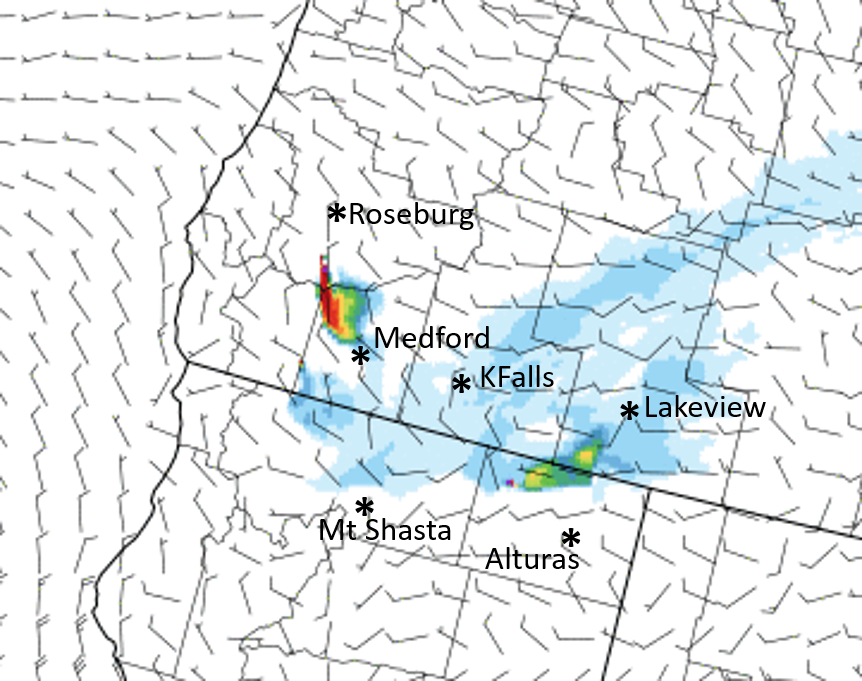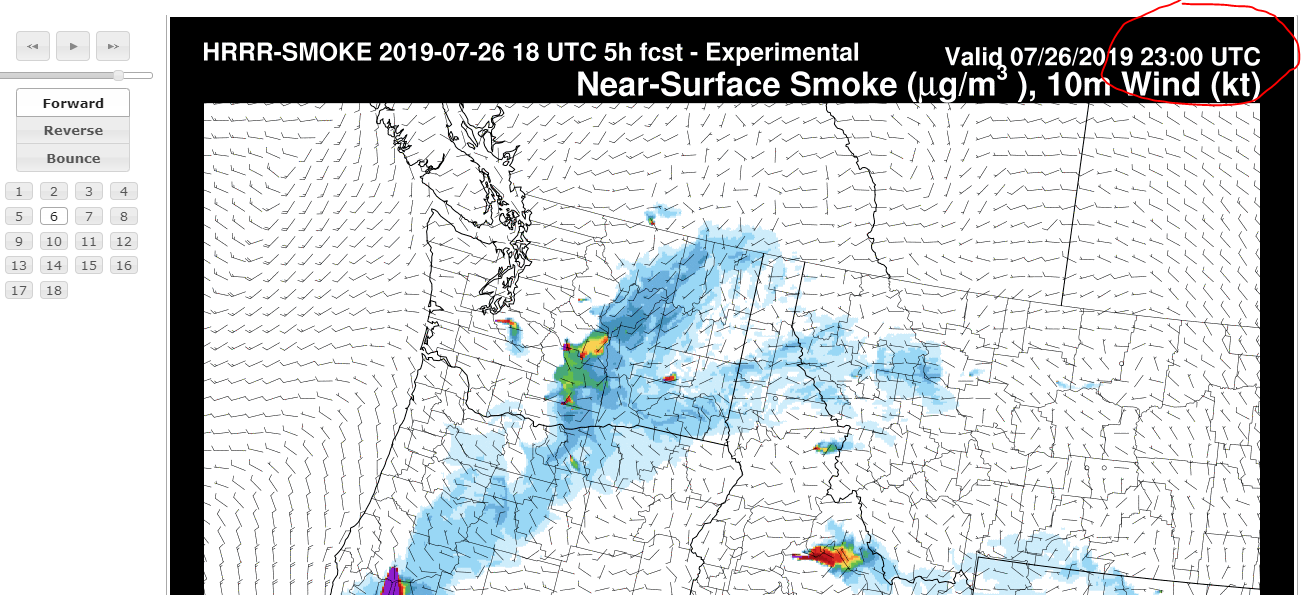
Heavy lake-effect and lake-enhanced snow will persist downwind of the Great Lakes and produce some whiteout conditions that could cause difficult travel conditions. A coastal low will produce moderate to heavy snow over parts of southern and eastern New England into the afternoon. Below average temperatures are expected across the eastern U.S., particularly with chilly morning temperatures. Read More >
The animated movie on the weather.gov/medford/wildfire web page is based on the HRRR. Typically those movies only go out 18 hours. If you want to view imagery that goes out 48 hours, this tuturial will help you get there. The HRRR smoke model has really improved over the past several years and can provide a good idea on where the greatest/least concentration of smoke will be, out to 48 hours. Please understand when viewing this imagery that no model is perfect, and it's usually best to use to view trends where smoke is getting worse or better. Take a look at the AQI in your area, and then you can use the model to see if it looks like your area will improve or worsen through the day/night.
Here's the link to the smoke model page: https://rapidrefresh.
Note that this imagery only shows county boundaries. Below is an image with some approximate city locations as a reference in case you're not familiar with all county boundaries.

When you go to the page, choose NW-Large on the domain for Northwest. Choose the most recent
00Z, 06Z, 12Z, or 18Z model run to get the full, 48 hour outlook. Other model runs go out
18 hours.
